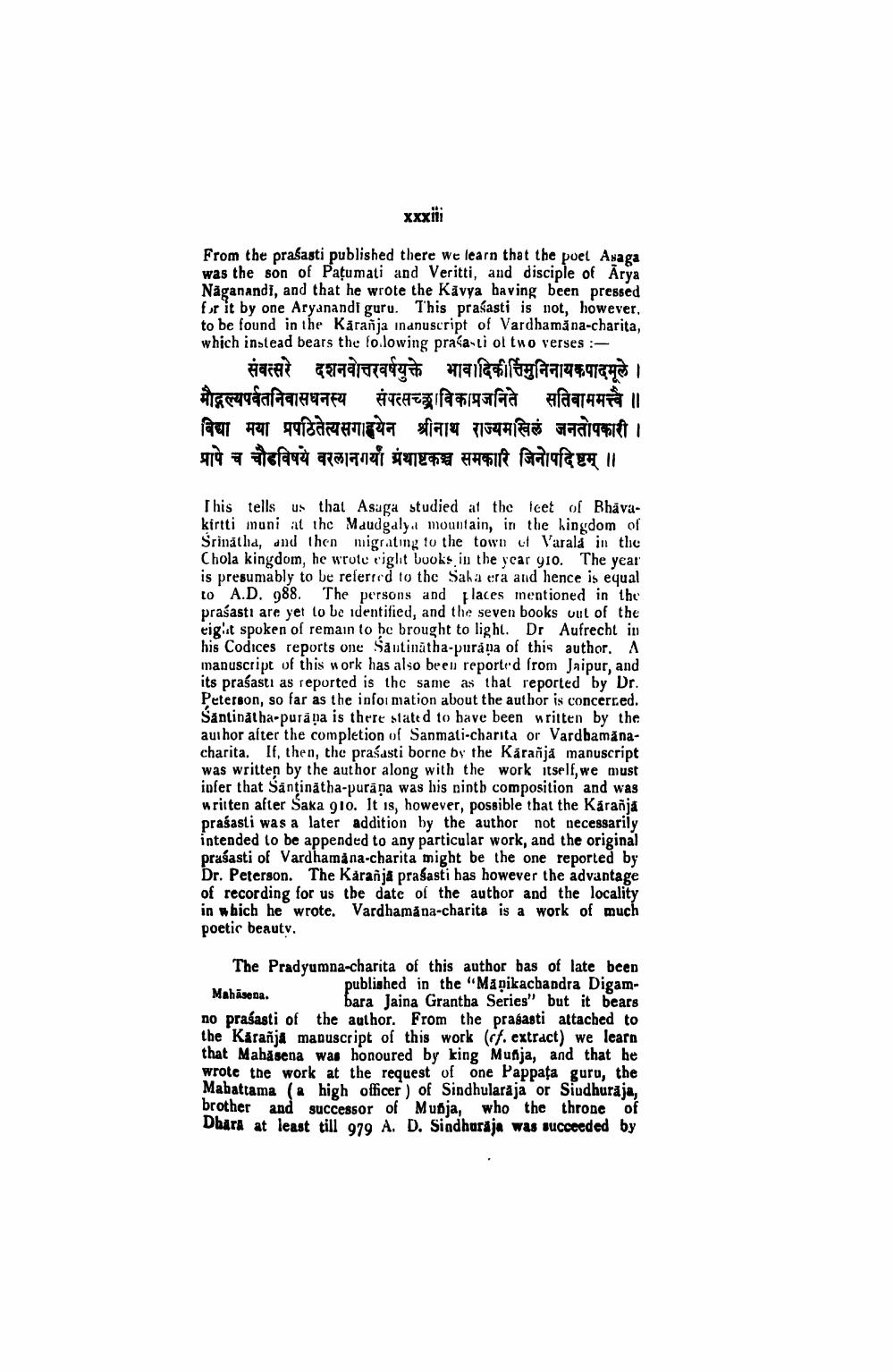________________
xxxiii
From the prasasti published there we learn that the poet Asaga was the son of Pațumati and Veritti, and disciple of Arya Någanandi, and that he wrote the Kavya having been pressed Er it by one Aryanandi guru. This prasasti is not, however, to be found in the Karanja inanuscript of Vardhamana-charita, which instead bears the fo.lowing praca-ti ol tuo verses :
___संवत्सरे दशनवोत्तरवर्षयुक्ते भावादिकीर्तिमुनिनायकपादमूले । मौद्गल्यपर्वतनिवासघनस्य संपत्सच्छाविकाप्रजनिते सतिवाममत्त्वै ॥ विद्या मया प्रपठितेत्यसगाहयेन श्रीनाथ राज्यमखिलं जनतोपकारी । प्रापे च चौडविषये वरलानगर्या ग्रंथाष्टकञ्च समकारि जिनोपदिष्टम् ।।
This tells us that Asuga studied at the feet of Bhavakirtti muni at the Maudgaly mountain, in the kingdom of Srinatha, and then migrating to the town of Varala in the Chola kingdom, he wrote ciglit books in the year 910. The year is presumably to be referred to the Saha era and hence is equal to A.D. 988. The persons and places mentioned in the praśasti are yet to be identified, and the seven books out of the cigit spoken of remain to be brought to light. Dr Aufrecht in his Codices reports one Santinātha-purapa of this author. A manuscript of this work has also been reported from Jaipur, and its prasasti as reported is the same as that reported by Dr. Peterson, so far as the information about the author is concerred. Santinatha-purapa is there stated to have been written by the author alter the completion of Sanmati-charita or Vardbamanacharita. If, then, the prasasti borne by the Karanja manuscript was written by the author along with the work itself, we must infer that Santinātha-purașa was his ninth composition and was written after Saka glo. It is, however, possible that the Karanja prasasti was a later addition by the author not necessarily intended to be appended to any particular work, and the original prasasti of Vardhamana-charita might be the one reported by Dr. Peterson. The Karanja prasasti bas however the advantage of recording for us the date of the author and the locality in which he wrote. Vardhamana-charita is a work of much poetic beautv.
The Pradyumna-charita of this author has of late been
published in the "Mapikachandra DigamMahasena.
bara Jaina Grantba Series" but it bears no prasasti of the author. From the pragasti attached to the Karañja manuscript of this work (cf. extract) we learn that Mahasena was honoured by king Munja, and that he wrote the work at the request of one Pappata guru, the Mabattama (a high officer of Sindhularāja or Siudhurāja, brother and successor of Muñja, who the throne of Dhara at least till 979 A. D. Sindharaja was succeeded by




